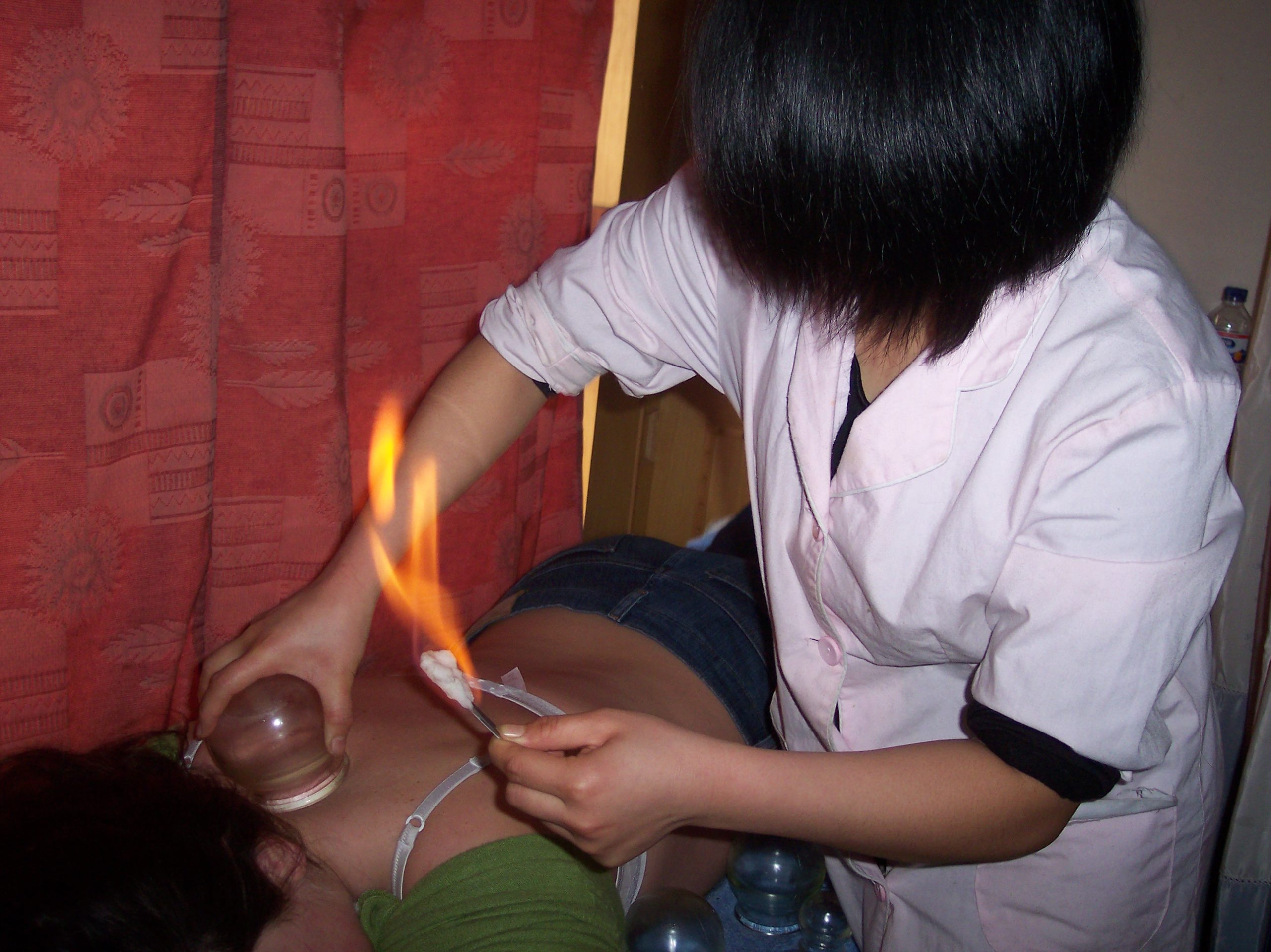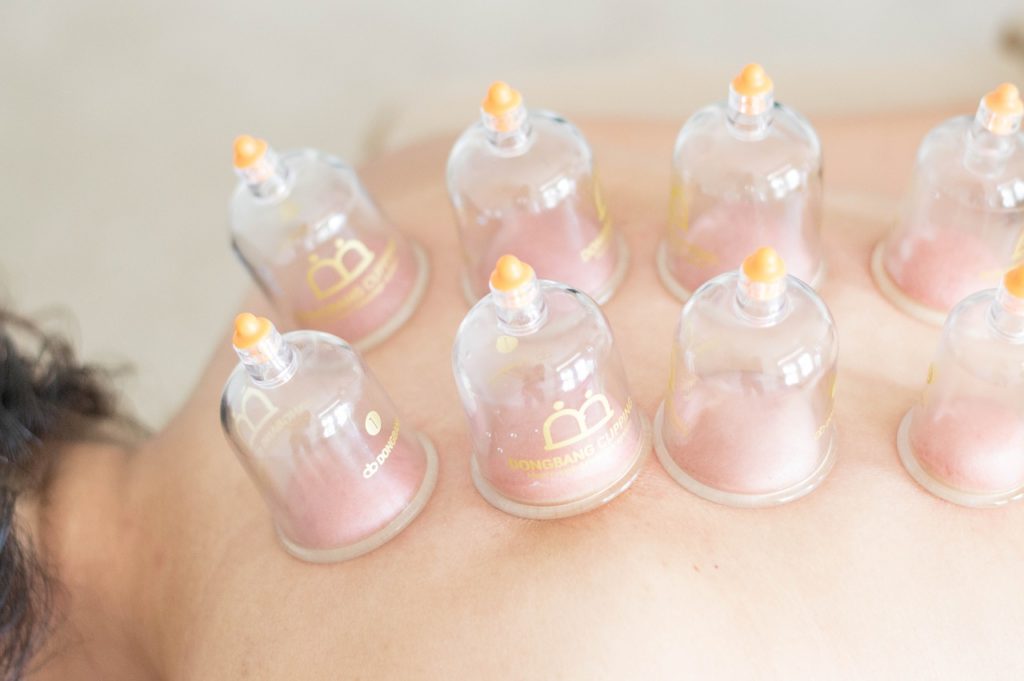Content
In Part 1:
– History
– Suction Cup, the Big Comeback Thanks to the Stars
– Suction Cup Classifications
– Virtues of the Technique of the Suction Cups
– Principle
– Mechanism
In Part 2:
– Practice
– Which Problems Benefit From the Suction Cups
– Contraindications
– Undesirable Effect
– Suction Pads in Children
– The Suction Cup Is Painless
– Frequency
History
The first mentions of suction cups’ therapeutic use can be found on the seal of a Mesopotamian physician dating back to 3300 BC.
The ancient Egyptians were the first to use glass suction cups systematically, around 1550 BC.
The Egyptians then introduced suction cups to Greece: Hippocrates (460-377 BC) who is considered the Father of Medicine, was notably an ardent defender of suction cups.
In China, suction cups (Ba Guan Zi) have been an integral part of Traditional Chinese Medicine since ancient times. They are mentioned in a medical treatise called Bo Shu (an ancient book written on silk) found in the Han dynasty’s tomb. It is here that we find the oldest writings on the use of suction cups. Cases of treatment of tuberculosis have been reported in the Weitaimiyao.
Subsequently, they were used as an adjunct method in traditional Chinese, Vietnamese, Arabic, Western medicine, etc., and proved useful in many other applications. They were finally recognized as a specific therapeutic method. The horn was replaced by bamboo, then ceramics or glass.
Suction cups were used until the 20th century and had disappeared in Western Europe with the arrival of sulfonamides and antibiotics while still practised in Asia.
Some of our grandmothers knew how to put the suction cups on, often to treat bronchitis, but this know-how was gradually lost…
Suction Cup, the Big Comeback Thanks to the Stars
Jennifer Aniston is a dream ambassador for cupping therapy. Cupping therapy is a method that already has many followers in Hollywood, such as Gwyneth Paltrow, Jessica Simpson, David Arquette and Victoria Beckham.
Today the technique is present under different names: Cupping, cupping therapy, hijama, vacuotherapy…. based on more and more precise care protocols that seduce many therapists such as naturopaths, and chiropractors…
Suction Cup Classifications
– When cold, the suction pads are pneumatic, installed with a pump.
– When hot, they are put down after making a relative vacuum inside the glass container thanks to the flame of a compress soaked in alcohol.
– Without scarifications, they are called “dry” suction cups.
Virtues of the Technique of the Suction Cups

– An analgesic effect: because it allows the secretion of endorphins in a significant way, observed in many patients after treatment.
– An anxiolytic impact: It has been shown that after bleeding when it is performed on specific points of the body, the patient falls asleep intensely during the session or afterwards. On waking up, he feels a sense of well-being and becomes dynamic. And the electroencephalogram reveals a decrease in delta and theta waves after treatment. A balancing effect: The suction cup treatment acts on the sympathetic and parasympathetic balance. The body also regains its hormonal balance, which explains the return to normal blood pressure in case of hyper or hypotension. It allows a hormonal balance in both men and women. It should be added that constipation and chronic diarrhea can be treated with suction cups.
– A reinforcement of immunity: as we said before.
– A reactivation of inactive motor centres in the brain: since dormant neurological cells become active again following a neurological process in which CAJAL and RANCHO cells are associated. An improvement has been observed in people with brain atrophy or neurological paralysis for several years.
– A reactivation of neuronal mediators, such as Dopamine. Dopamine deficiency can cause symptoms of Parkinson’s disease.
Principle
The relative vacuum created in the suction cup dilates pores and superficial blood vessels (capillaries). This produces localized skin congestion at the vacuum application site, resulting in a change in the appearance of the skin, which reddens and becomes covered with reddish to bluish dots. This congestion caused locally, above the supposedly diseased organ, was known to attract the “bad blood” or excess blood congesting an underlying organ.
A more contemporary explanation could be that the provoked blood flow and stress on the skin could decongest the underlying area (by a so-called “revulsion” effect) and boost the immune system.
The suction cups are applied at specific locations corresponding to acupuncture points chosen according to the disorder to be treated. The blood is the vehicle of energy; for Chinese medicine, the suction cup makes it possible to dynamize the blood and the Qi (energy in Chinese).
Mechanism
“The suction cups are placed on the “traffic jam” points to relieve congestion. A migraine is a congestion, just like an arthrosis”.
When the chiropractor is unable or unwilling to adjust, the suction cup is the gesture of the first intention that will relieve the patient and then allow a chiropractic adjustment in unparalleled comfort for the patient.
This post will now continue in part 2 to cover the rest of the content. Stay posted, and remember to comment and share this post.


